Black lilies: the best varieties and features of their cultivation
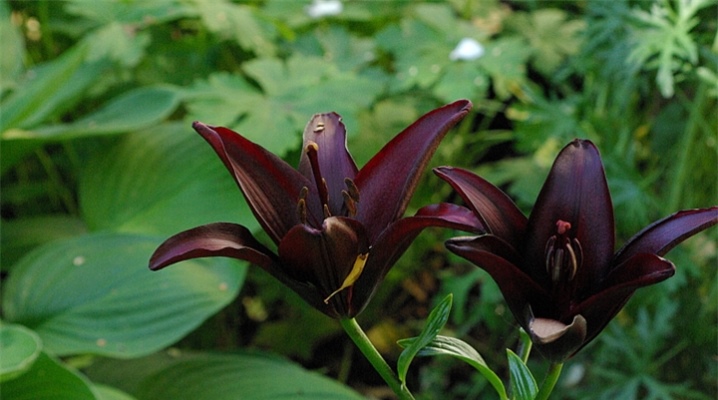
Most of our compatriots associate black flowers with mourning events and bitterness. Nevertheless, in recent years, the shade has become popular in floristry - flowers of this color are widely used as a leading element in bouquets. In most cases, the compositions are decorated with black lilies.
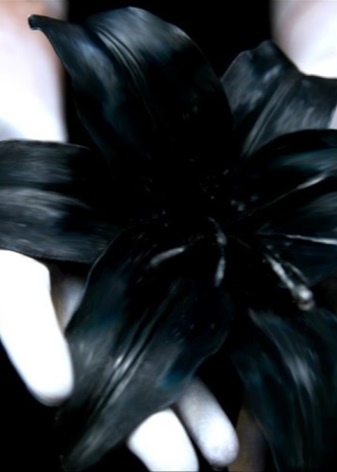
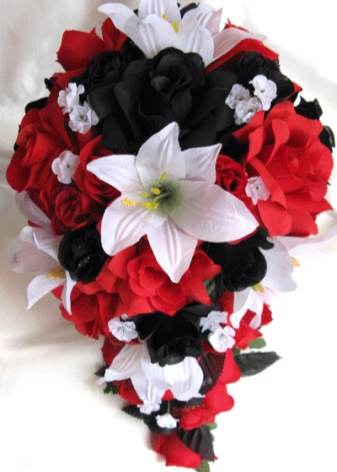
Description
Before talking about the black varieties of lilies, let us dwell on the characteristics of liliaceae in general. More than 9000 varieties of this plant grow on Earth. They are conventionally divided into 8 groups, the most numerous of which are Asian hybrids. It is to them that the black lily is referred.
Since ancient times, lilies have been recognized as a symbol of purity and innocence. Due to their decorative appearance, flowers quickly gained popularity in various parts of the world. In France, they were revered so much that the image of this unusual flower was even placed on the flags of the National Guard.

By the way, in translation from the dialect of the ancient Gauls "lily" means "white-white". That is why it is difficult for many to imagine that a lily can be black.
In fact, a pure black flower does not exist, in most cases it has a mixed color: with a blue, burgundy or purple tint.
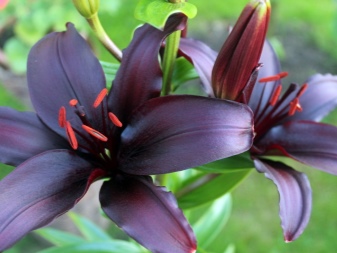
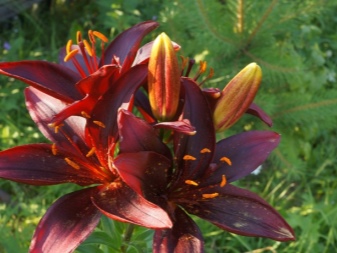
Black lilies are usually tall, ranging in length from 85 to 110 cm depending on the variety, the characteristics of care and the climatic conditions in which the crop is grown.
Varieties
Black color is the main distinguishing feature of the lily varieties "Landini"... This plant is characterized by a truly Gothic coloration, the petals have a deep, dark red hue, but under certain lighting they give the impression of almost black. This lily is one of the darkest of all liliaceae. Despite the unusual color scheme, "Landini" are very popular with gardeners and landscape designers.

These flowers are quite unpretentious and can easily endure cold, prolonged winters. Plants grow best on calcareous soils, they do not like stagnant moisture, therefore lowlands and places with a high level of groundwater are not suitable for planting: excessive moisture is created there, which leads to the rapid wilting of the culture. The turban-shaped flowers grow up to 8-20 cm, directed downward, upward and to the sides. Several flowers form a paniculate inflorescence.

A black lily in the garden looks harmoniously surrounded by roses and peonies in contrasting shades. Some gardeners argue that "Landini" looks good on their own, but it is in contrast that these plants are especially rich and harmonious.
The following varieties are also referred to as "dark" lilies.
- Lilia Mapira. This globular culture cannot be called pure black, it is more burgundy, with a rich dark center.
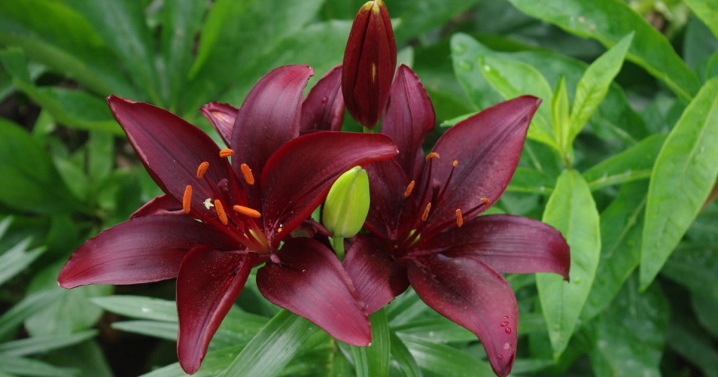
- Dimension. The flowers of this lily resemble maroon velvet, but in a frame of white flowers they look almost black.
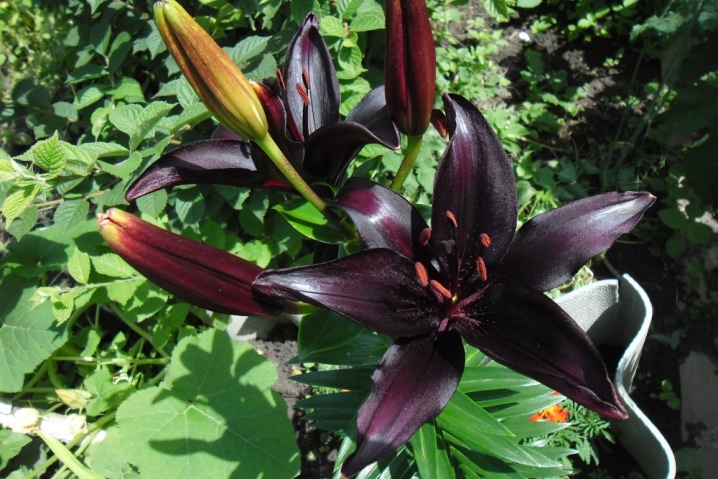
- "Lion Heart". One of the most popular varieties of garden lily with a unique color. Lily flowers are characterized by a deep dark purple color, which becomes more and more black as it approaches the center. In this case, the tips of the petals remain bright yellow, and the stamens are orange in color.
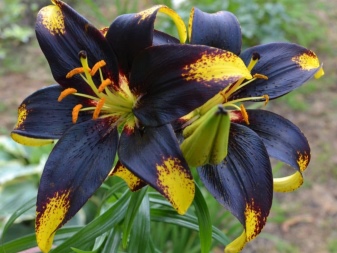

- "Night Ryder". Another representative of Asian hybrids of deep purple color. In the sun, the petals acquire a pronounced bronze tint.The flowers reach a length of 17 cm, as a rule, they are collected in inflorescences, looking to the sides and down.
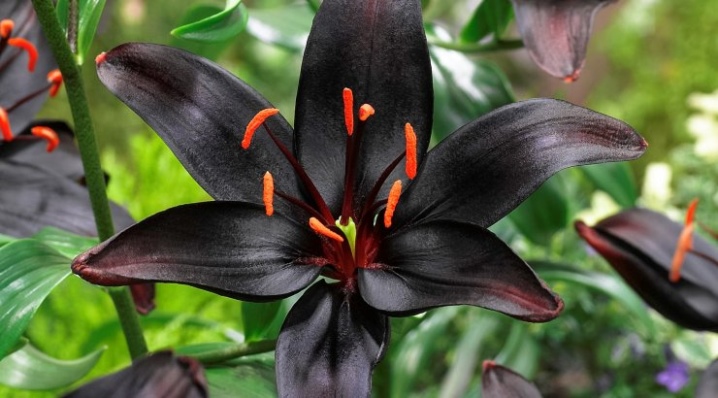
- "Black Prince" - a special representative of dark hybrids. A distinctive feature of these lilies are turbid flowers with curled petals of a dark crimson, almost black color. Each inflorescence contains 30 to 50 flowers. "Black Prince" has a delicate refined aroma.

Planting and leaving
Before planting black lilies, it is necessary to thoroughly dig the ground to a depth of 30-45 cm, since the roots of the plants go deep down. If the soil is clay, then river sand and peat are introduced to improve the chemical composition of the substrate, otherwise the water will stagnate and cause rotting of the root system.
It is advisable to fertilize the land with organic matter: compost or rotted manure. The fertilizer application rate is 1.5-2 buckets for each square meter of the plot. To reduce the acidity level of the soil, add thinned wood ash (200 g / sq. M) or chalk (300-500 g / sq. M).


Black lily prefers well-lit areas, so when preparing the land, you need to take into account the height of neighboring plants, as well as walls and fences.
Before planting, it is necessary to remove all dried roots and damaged scales. Works are best carried out in the first decade of September. Immediately before planting, it is recommended to soak the bulbs in a weak solution of potassium permanganate to disinfect and prevent fungal infections.
The bulbs are buried 15-20 cm. A distance of 25-30 cm is left between several seedlings. Keep in mind that black lilies quickly acquire daughter bulbs, so they will have to be separated and planted every 3-5 years.
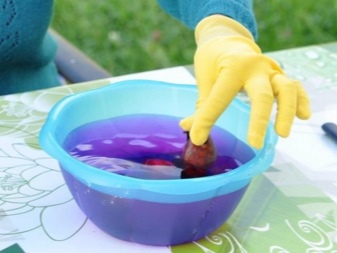
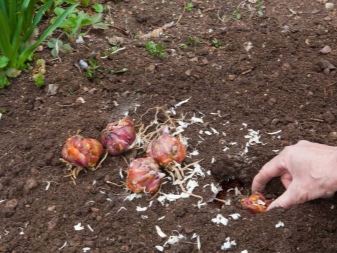
After planting, the land must be watered abundantly and covered with mulch.
The black lily is very demanding to care for; the land around the plant must be regularly weed out and loosened. Watering is required regularly, while it is better to direct the water under the root so that it does not fall on the stem and leaves of the plant.
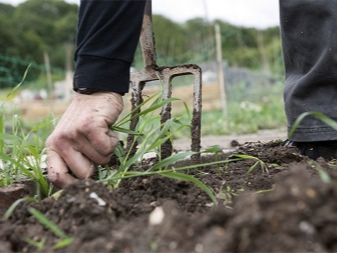

Black lily reproduces with the help of corms or seeds. The first method is considered the most convenient and effective; even a novice florist can cope with such work. All you need to do is dig up the lilies and divide the nest of bulbs. Please note that the separated tubers should be planted as soon as possible. If this is not possible, they should be placed in a cool place and stored at a temperature of 0-5 degrees in river sand or wrapped in moss.
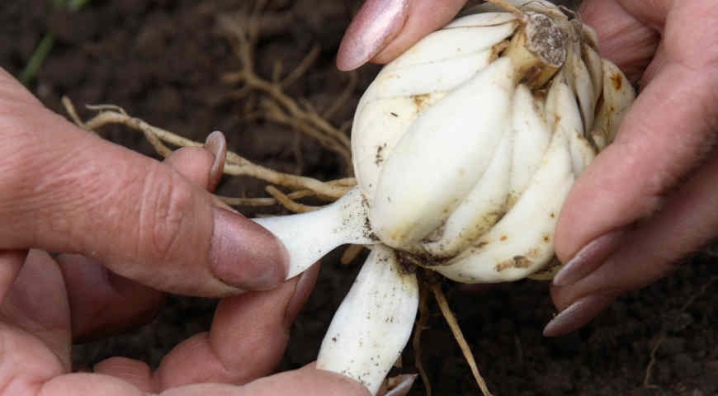
See below for more details.
Common diseases
Like all other garden crops, black lilies sometimes encounter diseases and pests. The main danger for such flowers is the following ailments.
- Gray rot - this fungus grows with the onset of spring, damaging the green parts of the flower. At the same time, the bulbs remain intact, so healthy flowers can grow from them next season. To prevent the treatment of gray rot, the lily can be sprayed with Bordeaux liquid.
- Fusarium - this disease is fungal in nature and destroys the bottoms of the bulbs, which leads to a slowdown in the growth and development of the flower. If signs of pathology are found, the tubers should be uprooted as soon as possible, the affected fragments should be removed and kept in the Fundazol solution for about half an hour.
- Variegated Is a viral infection that is carried along with insects. The disease causes a sharp deterioration in the health of the lily, but it does not die, although it can contribute to the further spread of the virus.
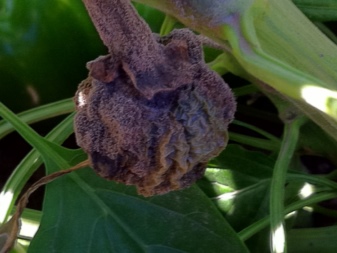
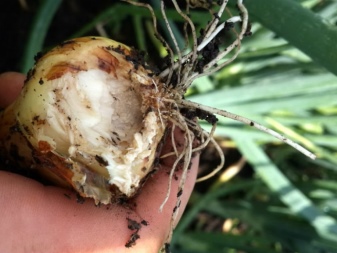
Can I grow in an apartment?
Forced to upset lovers of home plants - black lilies are not used in indoor landscaping. Some growers try to grow them at home, but each time they face failure. These plants have strict requirements for humidity and temperature conditions. In their natural environment, they live on the coasts of the seas and oceans, in tropical mountain forests, where the humidity is increased, and the soil is rich in humus.
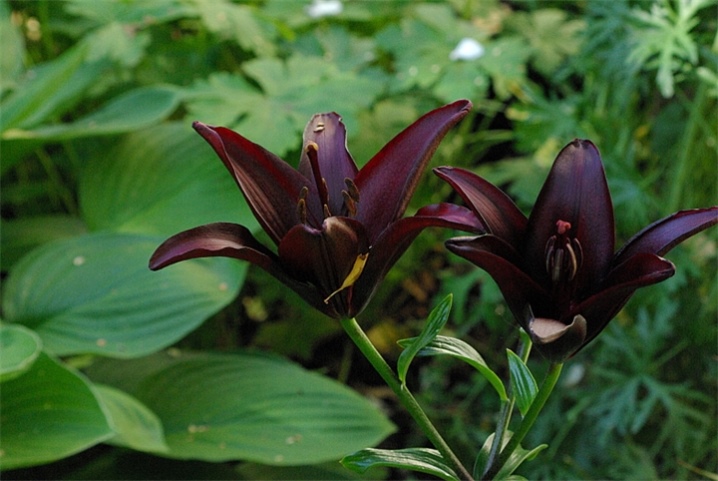
Some black lilies grow in savannas: in the dry season, the ground parts of the plant die, but as soon as the rainy period begins, they grow back. Accordingly, at home, culture needs to provide similar living conditions. It is unrealistic to do this in residential premises, since such a microclimate is destructive for humans.
Alternatively, black lilies can be grown in greenhouses - it is no coincidence that these plants adorn the richest and most beautiful winter gardens.

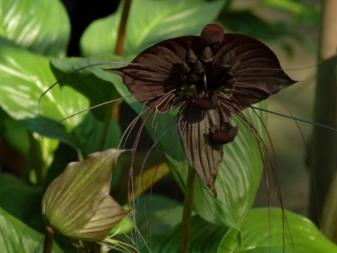







































































































The comment was sent successfully.